#13 in Vietnam
Hủ Tiếu: Basic Information
Pronunciation
Alternative Name(s)
Dish Type
Course
Mealtime
Popular Hủ Tiếu Variations
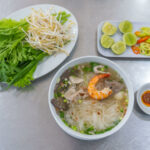
Hủ Tiếu Nước
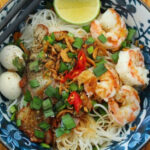
Hủ Tiếu Khô
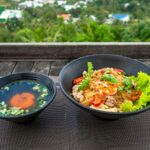
Hủ Tiếu Nam Vang

Hủ Tiếu Gõ

Hủ Tiếu Sa Tế
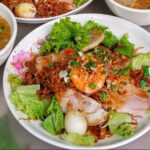
Hủ Tiếu Sa Đéc
Hủ Tiếu: Ingredients and Preparation
Main Ingredients
Main Cooking Method
Preparation Process
Hủ Tiếu: A Deep Dive
Cultural Significance
Taste
Texture
Aroma
Color
Serving Style
Serving Temperature
Accompaniment
Occasions
Seasons
Special Diets
Calories
Popularity
Popular Similar Dishes
- Kuyteav
- Kway Teow
- Kyay Oh
Popular Dining Area
Hủ tiếu, or hủ tíu, is a national Vietnamese noodle specialty that often appears as either the dry or broth varieties.
Originally, this traditional noodle dish was a creation of the Teochew people, with the first Vietnamese version known as Hủ tiếu Nam Vang.
Often, the noodles used for hủ tiếu have a tougher and chewier texture though they are also made of rice flour.
Once cooked, these street-side noodles are combined with meat, vegetables, herbs, and spices that vary differently depending on the region.
Typically, a standard hủ tiếu bowl comes with peeled shrimp, pork intestines, sliced pork liver, pork (minced or slices), meatballs, and many other options.
In places like My Tho, the noodles of hủ tiếu have a chewier texture than other varieties.
As for the broth, many hủ tiếu versions revolve around using pork bones, dried shrimp or squid to produce a natural sweet base. Interestingly, the southern hủ tiếu’s broth is usually sweeter to complement people’s palate.
In 2013, hủ tiếu was proudly introduced by Gordon Ramsay in a Master Chef episode as a dish for contestants to recreate.
Before that, in 2010 – 2011, Gordon even ventured to the Cai Rang floating market in Vietnam to taste hủ tiếu made by locals.
Aside from just the hủ tiếu, you need to learn more about its variants along with the elements and procedures required to produce a bowl of this hot noodle dish.
Also, it’s wise to note down some of the locations that sell hủ tiếu in Vietnam, along with the benefits and drawbacks of eating hủ tiếu before diving into some common concerns about the dish.
Plus, I’ve also prepared a few specialties having similar features to hủ tiếu just for you to expand your knowledge.
Key Points
Hủ Tiếu Images
What Are Different Versions of Hủ Tiếu?
To better understand hủ tiếu, you need to have a thorough look at its variations that come in 21 different versions:

Hủ Tiếu Nước
Soup version of hủ tiếu, typically served with a clear and flavorful broth
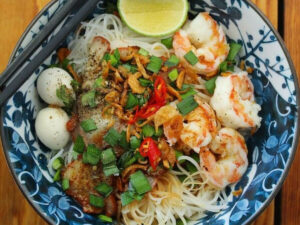
Hủ Tiếu Khô
Dry version, often mixed with a soy-based sauce and served with a side of broth

Hủ Tiếu Sa Đéc
Named after Sa Đéc province, known for its rich and aromatic broth due to the water PH level of 7

Hủ Tiếu Gõ
Street version often sold by vendors knocking (gõ) on bamboo tubes to signal their presence
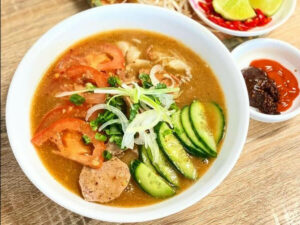
Hủ Tiếu Sa Tế
A version inspired by the Teochew peopleSpicy version of hủ tiếu due to the addition of chili paste
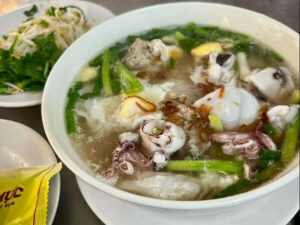
Hủ Tiếu Mực
Features squid as the primary protein
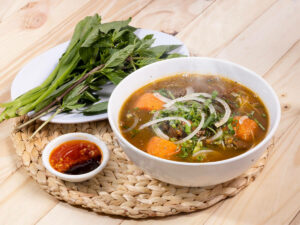
Hủ Tiếu Bò Kho
A version combining the broth and tender stewed beef (bò kho) with the hủ tiếu noodles
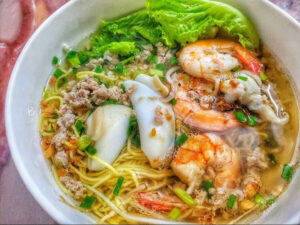
Hủ Tiếu Mì
A mix of two types of noodles, offering a unique texture and flavor combination
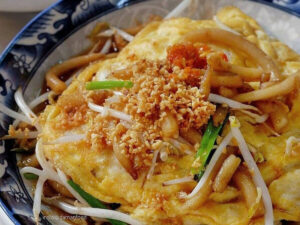
Hủ Tiếu Xào
A stir-fried version of hủ tiếu ingredients for a smoky profile
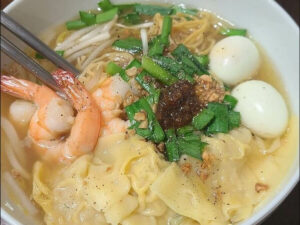
Hủ Tiếu Mì Hoành Thánh
A fusion version that brings together hủ tiếu noodles and egg noodles to savor with soft wonton

Hủ Tiếu Áp Chảo
A stir-fry version of with the noodles taking on the color of soy sauce
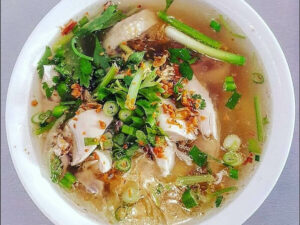
Hủ Tiếu Gà
A hủ tiếu but uses chicken as the main protein source
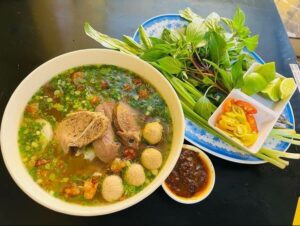
Hủ Tiếu Bò Viên
A broth hủ tiếu with slices of beef balls as the center of attention

Hủ Tiếu Chay
A vegetarian adaptation of hủ tiếu

Hủ Tiếu Dê
A bolder profile of hủ tiếu with an orange color, and the meat is mainly goat
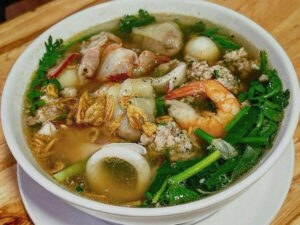
Hủ Tiếu Hải Sản
A hủ tiếu variation that revolves around seafood option
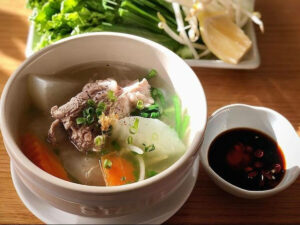
Hủ Tiếu Sườn
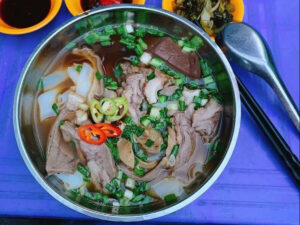
Hủ Tiếu Hồ
A hủ tiếu version created by the Tiều ethnic people in Vietnam
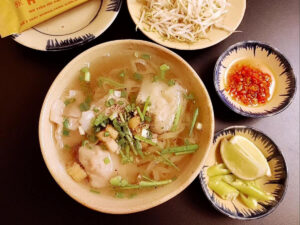
Hủ Tiếu Trung Hoa
Chinese-style hủ tiếu, often using wider rice noodles known as shahe fenPossesses a stronger soy sauce profile

Hủ Tiếu Mỹ Tho
Originates from My Tho city, typically features both seafood and pork
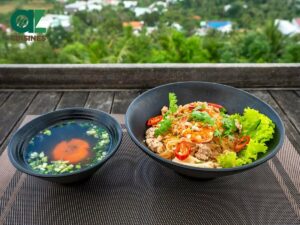
Hủ Tiếu Nam Vang
Offer two varieties of either dry or with broth, as mentioned above
Once you’ve got the hang of the hủ tiếu variants, don’t shy away from its ingredients to understand the elements that create the dish’s unique flavor.
What Are the Ingredients of Hủ Tiếu?
Hủ tiếu comes with various flavors created by combining all sorts of ingredients. For that, it’s important for anyone to know the main composition of hủ tiếu:
| Ingredients | Description |
|---|---|
| Broth | Pork bones, dried squid or dried shrimp, onion, ginger, salt, fish sauce, soy sauce |
| Noodles | Hủ tiếu noodles with chewy, translucent profile |
| Proteins | Pork, seafood, offal, quail eggs, intestine |
| Toppings and add-ins | Fresh herbs (chives, green onions, cilantro), bean sprouts, fried shallots or garlic, lettuce, lime wedges, soy sauce, chili peppers |
Aside from the ingredients, the process of making hủ tiếu is one of the main factors that determine its final flavor, texture, and profile.
How to Make Hủ Tiếu?
Making hủ tiếu is quite a fun process, with many versions having a unique approach. For that, let me introduce you to two of the most basic ways of making hủ tiếu with soup and dry hủ tiếu:
For The Soup Version:
Step 1: Broth preparation
Simmer pork bones in water for several hours to extract flavors. Occasionally skim off any impurities that rise to the surface. Add dried squid or dried shrimp, onion, and ginger to the broth. Season with salt, fish sauce, and a touch of soy sauce.
Step 2: Straining
Strain the broth to remove solids and keep it simmering on low heat.
Step 3: Noodles
Blanch the hủ tiếu noodles as per package instructions until they’re soft but still have a bite. Drain and set aside.
Step 4: Proteins
Prepare sliced pork, ground pork or pork meatballs, and seafood by either boiling them in the broth or sautéing separately.
Step 5: Assembly
In individual bowls, place a portion of the cooked hủ tiếu noodles. Add the proteins on top. Ladle the hot broth over the noodles and proteins. Garnish with fresh herbs, bean sprouts, fried shallots or garlic, and serve with lime wedges and chili peppers on the side.
For The Dry Version:
Step 1: Blanch the Noodles
Blanch the hủ tiếu noodles according to the package instructions.
Step 2: Prepare the Proteins
Cook the proteins (pork slices, ground pork, seafood) either by boiling or sautéing.
Step 3: Prepare the Sauce
In a separate bowl, mix soy sauce with a bit of sugar, garlic oil, and a splash of the prepared broth to create a sauce for the dry version.
Step 4: Assembly
Place a portion of the cooked hủ tiếu noodles. Add the proteins on top. Pour the sauce mix over the noodles, ensuring they’re well-coated. Garnish with fresh herbs, bean sprouts, fried shallots, or garlic.
Step 5: Serving
Serve the dry hủ tiếu with a smaller bowl of clear broth on the side, allowing diners to sip it as they eat or add to their main bowl as desired.
After knowing the process of making hủ tiếu, step up your game by learning about the locations that offer this tasty noodle soup in Vietnam.
Where to Eat Hủ Tiếu in Vietnam?
When you’re coming to Vietnam, these are the locations to get yourself a bowl of tasty hủ tiếu:
In the South:
Hủ tiếu Nam Vang Đạt Thành
Address: 232 Nguyen Thi Thap, Binh Thuan ward, District 7, HCMC
Opening time: 7 AM – 11 PM
Quán Trường Thạnh
Address: 145/6 Nguyen Thien Thuat, Ward 1, District 3, HCMC
Opening time: 4 AM – 2 PM
Quán hủ tiếu Quốc Ký
Address: 24 Ky Con, Nguyen Thai Binh ward, District 1, HCMC
Opening time: 6 AM – 11 PM
In the North:
Hủ Tiếu Mực Ba Hiếu
Address: 29 Nguyen Huy Tu, Hai Ba Trung, Hanoi
Opening time: 7 AM – 9 PM
Phát Ký Mỳ Gia
Address: 42C Ly Thuong Kiet, Hoan Kiem, Hanoi
Opening time: 7 AM – 2 PM
Hủ Tiếu Minh Châu
Address: 67 Tue Tinh, Hai Ba Trung, Hanoi
Opening time: 7 AM – 9 PM
Before heading out to one of these hủ tiếu destination, I suggest taking a peek at some of the positive and negative features that people often encounter when eating this flavorful noodle soup.
Pros and Cons of Eating Hủ Tiếu
These are a few features that people should weigh up before deciding whether to consume hủ tiếu or not:
Pros
Cons
Make sure to check out some of the common concerns that people often have when hủ tiếu is the main topic of the conversation.



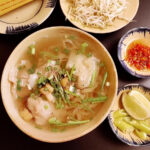
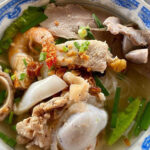
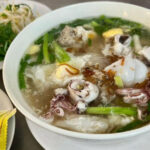
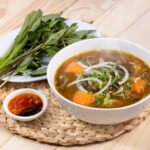
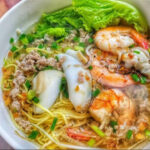
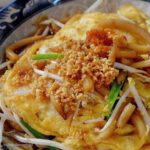


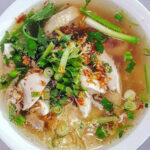


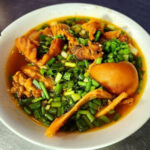
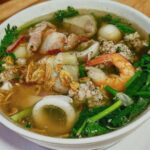

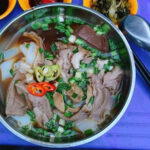
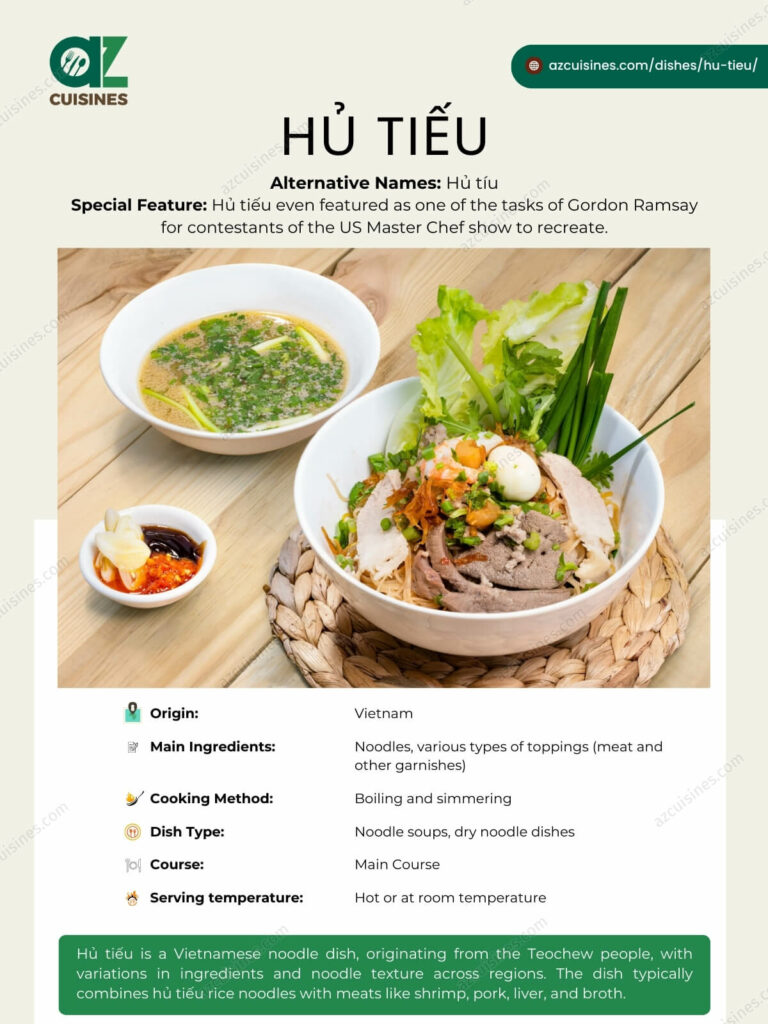
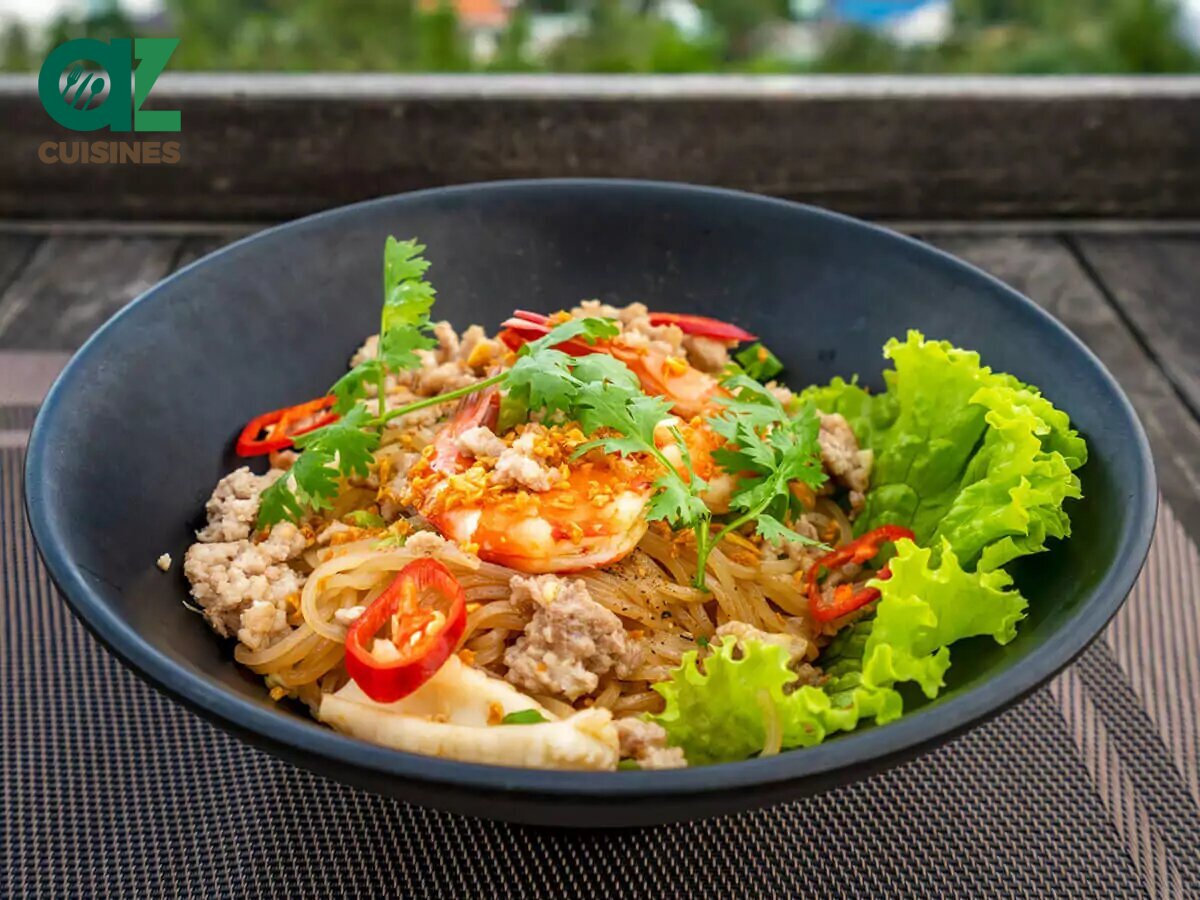
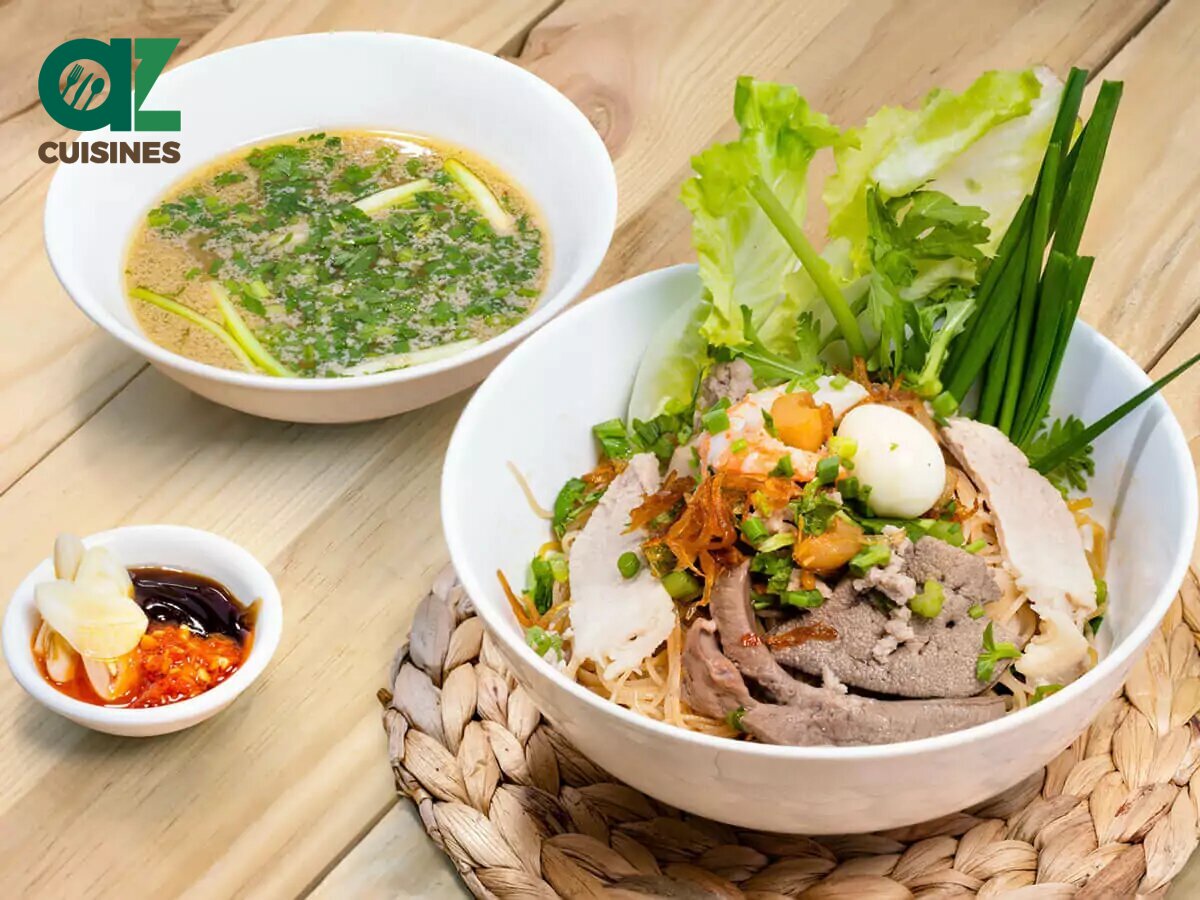
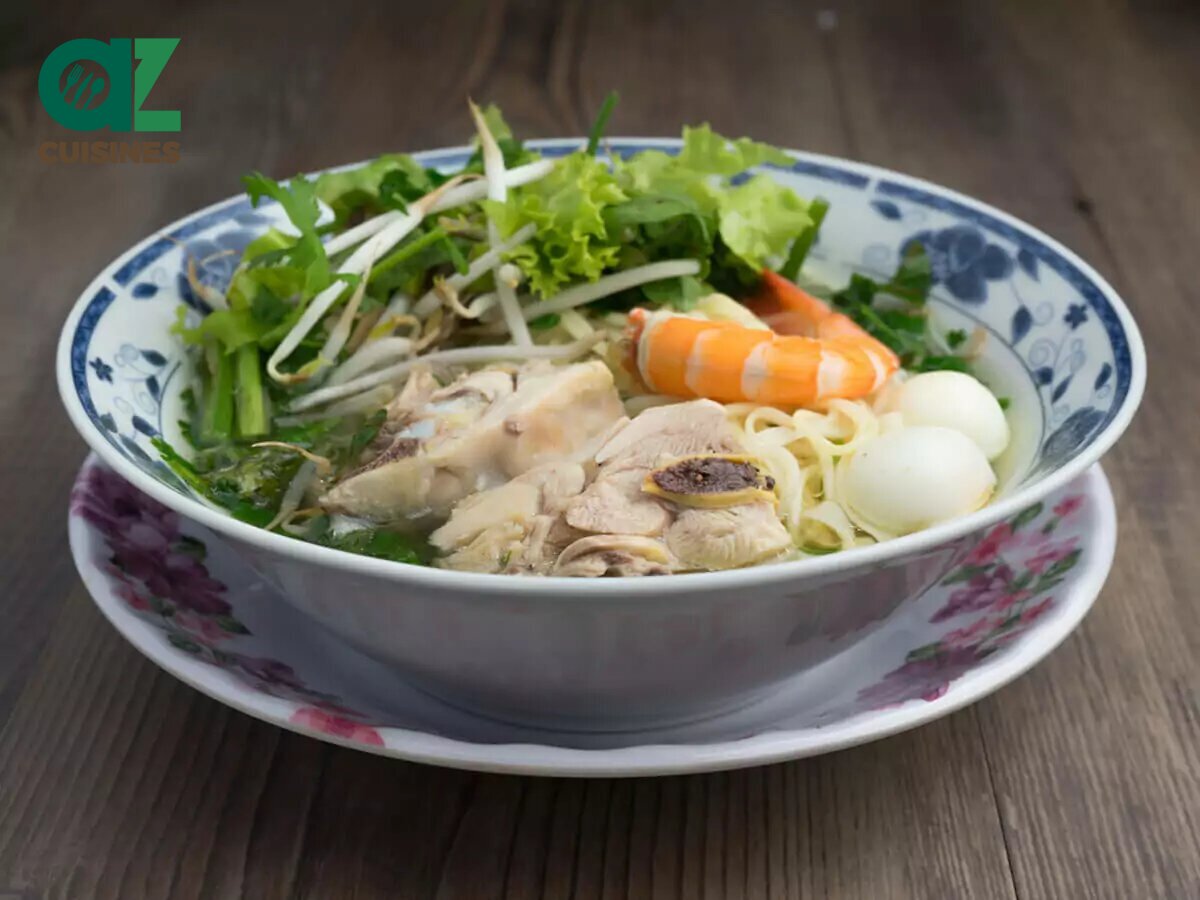

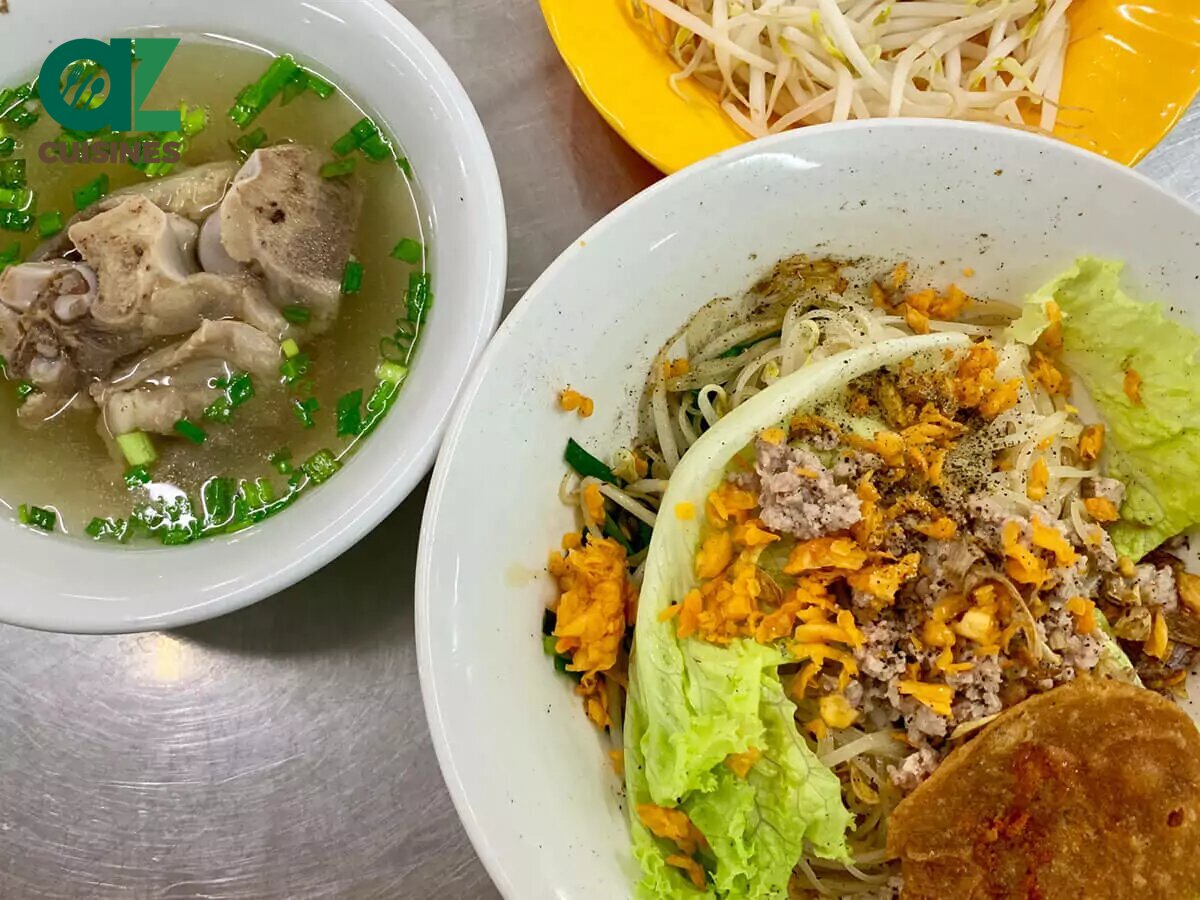
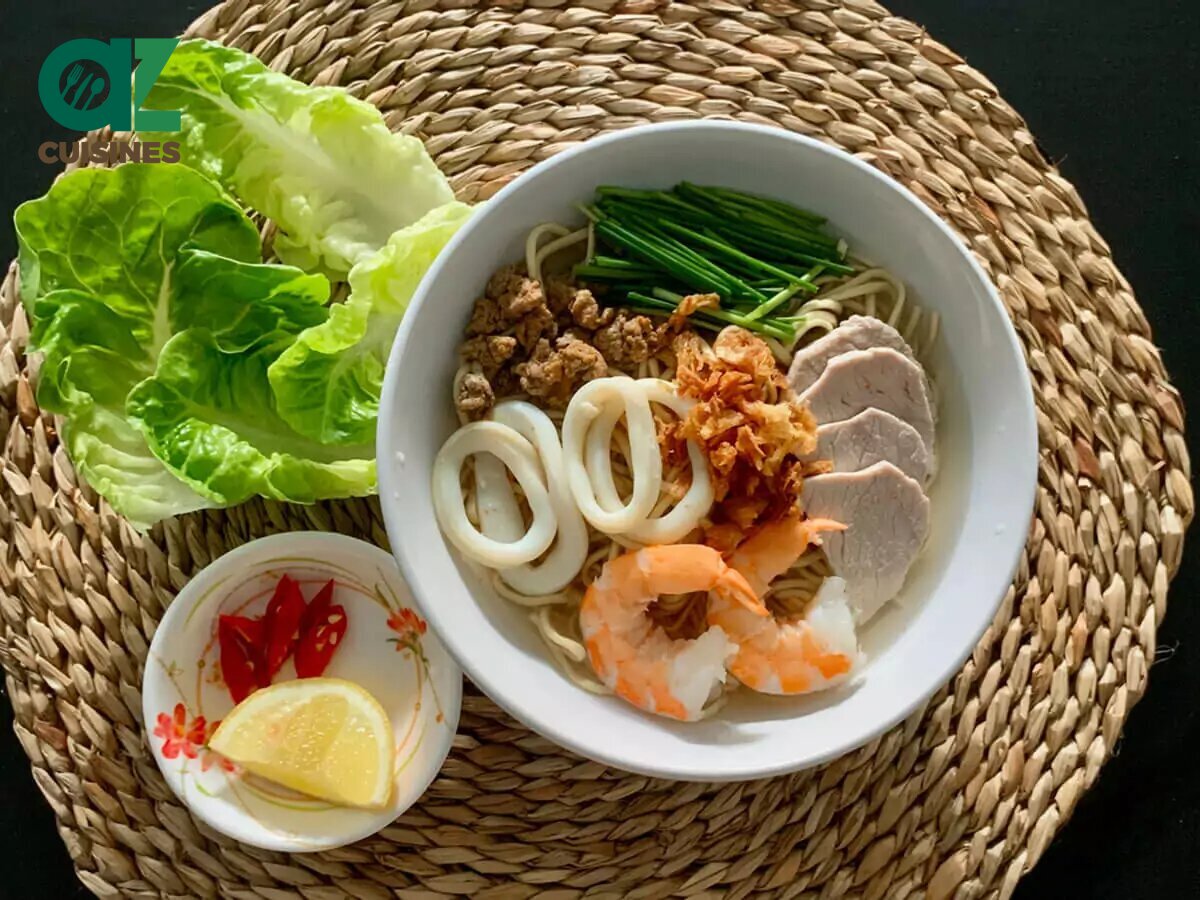

Truc Tran (Kris)
Senior Food Editor
Expertise
Home Cooking, Meal Planning, Recipe Development, Baking and Pastry, Food Editor, Cooking-video Maker, Vietnamese Food Evaluation Expert
Education
Truc Tran (Kris), an experienced food writer and editor, is great at exploring and describing global cuisines, from simple street food to fancy dining. In her writing, she skillfully mixes different flavors, cooking methods, and culinary traditions, showing the unique character of various cultures through their food and drinks. On azcuisines.com, Kris highlights her knowledge, especially in Asian cuisine and worldwide traditional dishes.